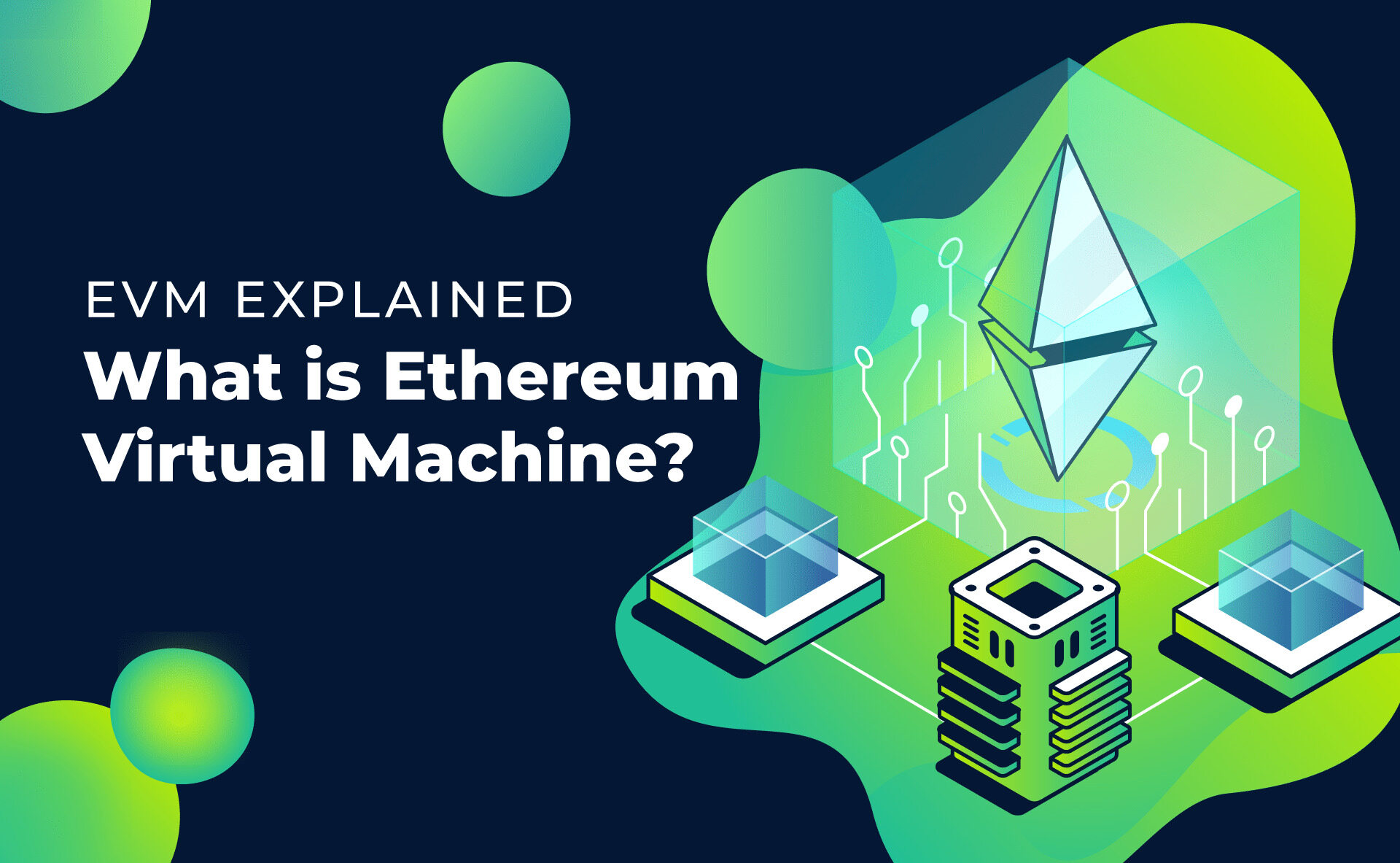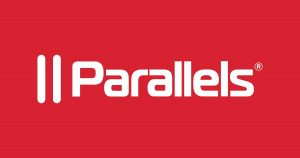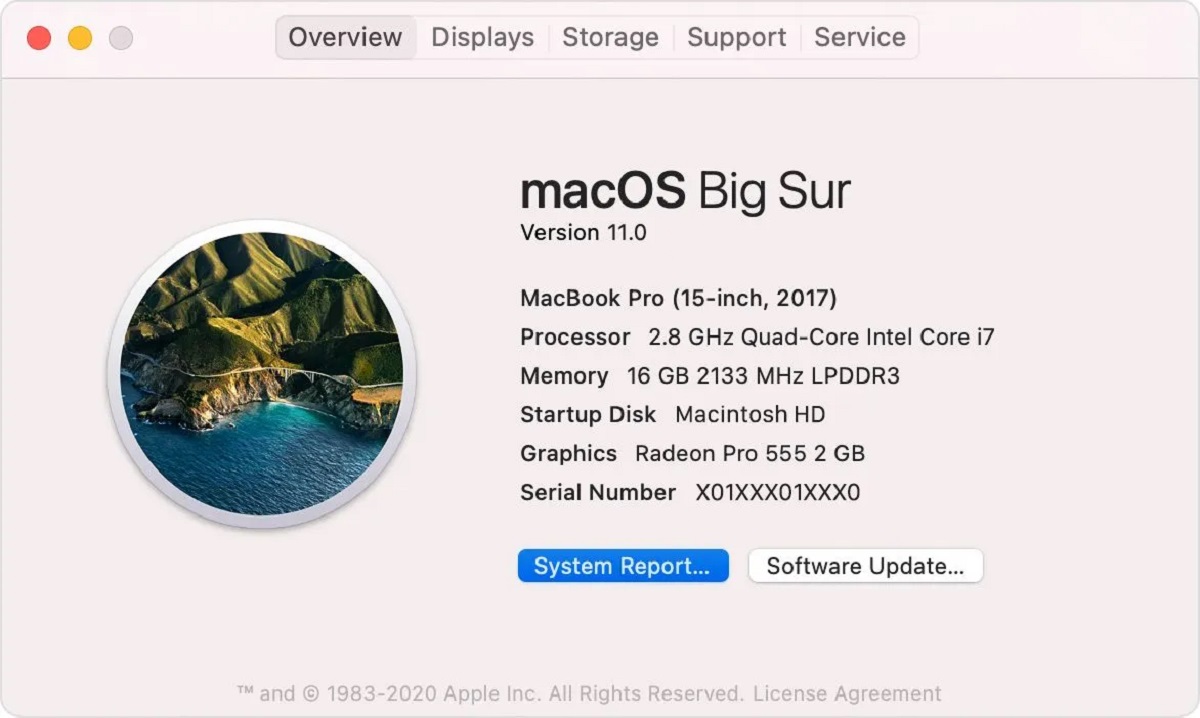Introduction
A virtual machine (VM) is a software emulation of a computer system that allows users to run multiple operating systems and applications on a single physical computer or server. With the advancement of cloud computing, virtual machines have become a popular choice for businesses and individuals seeking scalable and cost-effective computing solutions.
In this article, we will explore the cost of virtual machines and the factors that influence their pricing. Understanding the cost structure of virtual machines is vital for making informed decisions and optimizing resource allocation in cloud environments.
Virtual machines are widely used for a variety of purposes, ranging from hosting websites and applications to running complex simulations and performing data analysis. Whether you are a small business owner, a developer, or an IT professional, it is important to have a clear understanding of the cost factors associated with virtual machines.
By analyzing the various elements that contribute to the cost of a virtual machine, users can make informed decisions when selecting a cloud provider and allocate resources efficiently. Additionally, understanding the cost drivers will enable users to implement cost optimization strategies and minimize unnecessary expenses.
This article will delve into the different aspects that influence the cost of a virtual machine, including compute power, storage requirements, network usage, and data transfer costs. We will also explore different pricing models offered by cloud providers and provide practical tips for cost optimization.
Whether you are considering deploying virtual machines for your business or simply seeking a better understanding of the associated costs, this article will provide you with the necessary insights to make informed decisions and maximize the value of your cloud infrastructure investment.
Factors that Influence the Cost of a Virtual Machine
Several key factors contribute to the cost of a virtual machine. Understanding these factors is essential for estimating and managing expenses effectively. Let’s explore some of the key elements that influence the cost of a virtual machine:
- Compute Power: The computational capabilities of a virtual machine, such as the number of CPU cores, RAM size, and processing speed, greatly impact its cost. Higher-performance virtual machines typically come at a higher price due to the increased resources they require.
- Storage Requirements: The amount of storage allocated to a virtual machine is a significant cost factor. Cloud providers offer different storage options, including standard magnetic disks, solid-state drives, and premium storage tiers. The size and type of storage selected directly influence the overall cost.
- Network Usage: Virtual machines that involve higher network usage, such as those serving heavy traffic websites or running data-intensive applications, may incur additional costs. Cloud providers usually charge for network bandwidth consumed and the amount of data transferred in and out of the virtual machine.
- Data Transfer Costs: If your virtual machine experiences a significant amount of inbound or outbound data transfer, you may be subject to additional charges. This is particularly important to consider if your virtual machine handles large file transfers, serves media content, or interacts heavily with external systems.
- Geographical Location: The physical location of your virtual machine affects its cost. Cloud providers often have different pricing tiers based on regions and availability zones. Keep in mind that selecting a closer location to your target audience can optimize network latency, but it may come with a higher price tag.
- Operating System and Software: Some cloud providers offer virtual machine images with pre-installed operating systems or software applications. The cost of these images may vary based on the licensing fees associated with the software. Additionally, if you choose to bring your own license, there may be additional costs involved.
- Instance Type and Configuration: Cloud providers offer various instance types, each with its own performance characteristics and pricing. It is important to carefully analyze your workload requirements and select the most cost-effective instance type that meets your needs.
By considering these factors, users can gain a better understanding of the cost components that contribute to their virtual machine expenses. This knowledge empowers users to optimize their resource allocation, select the most suitable configurations, and ultimately, manage their virtual machine costs effectively.
Cloud Providers and Pricing Models
When it comes to virtual machines, there are several cloud providers to choose from, each offering their own pricing models and options. Understanding the pricing structures of different providers is essential for making cost-effective decisions. Let’s explore some common cloud providers and their pricing models:
1. Amazon Web Services (AWS): AWS provides a wide range of virtual machine options through its Elastic Compute Cloud (EC2) service. EC2 offers both on-demand instances and reserved instances. On-demand instances are suitable for short-term and unpredictable workloads, with prices based on hourly usage. Reserved instances require a longer-term commitment and provide discounts for hourly usage based on payment options.
2. Microsoft Azure: Azure offers virtual machine options through its Azure Virtual Machines service. Azure provides pay-as-you-go pricing, where you are billed based on the time your virtual machine is running. They also offer discounted prices for reserved instances, allowing users to commit to a term and receive a reduced hourly rate.
3. Google Cloud Platform (GCP): GCP offers virtual machines through its Compute Engine service. GCP provides sustained use discounts, where you receive automatic discounts based on the amount of time your virtual machine is running in a month. They also offer preemptible instances at significantly reduced costs, suitable for short-term or non-critical workloads.
4. IBM Cloud: IBM Cloud offers virtual machines through its Virtual Servers service. They provide a combination of hourly and monthly billing options, allowing users to choose the most cost-effective payment method based on their usage patterns. IBM Cloud also offers reserved instances with discounted rates for longer commitments.
5. Alibaba Cloud: Alibaba Cloud offers virtual machines through its Elastic Compute Service (ECS). ECS provides both pay-as-you-go and subscription-based pricing options. Pay-as-you-go instances are billed on an hourly basis, while subscription instances provide discounted rates for longer commitments.
These are just a few examples of cloud providers and their pricing models. It is essential to thoroughly evaluate the pricing structures and features offered by different providers to make an informed decision. Consider factors such as pricing flexibility, discounts, and support options when comparing providers.
Additionally, some providers offer calculators and cost management tools to help users estimate their virtual machine costs and optimize their spending. Taking advantage of these resources can significantly assist in managing and optimizing your virtual machine expenses.
By carefully evaluating different cloud providers and their pricing models, users can select the most cost-effective option for their virtual machine needs and avoid unnecessary expenses.
Compute Cost
The compute cost is a crucial component of the overall cost of a virtual machine. It primarily depends on the computational resources allocated to the virtual machine, including the number of CPU cores, RAM capacity, and processing speed. Let’s dive deeper into compute costs and how they are calculated:
1. CPU Cores: The number of CPU cores allocated to a virtual machine directly impacts its compute cost. A higher number of cores provides better performance but comes at a higher price. Cloud providers offer different instance types with varying CPU configurations to meet diverse workload requirements.
2. RAM Capacity: The amount of RAM assigned to a virtual machine affects its compute cost. Virtual machines with higher RAM capacities are generally more expensive due to the increased memory resources. It is important to assess the memory requirements of your applications and choose an appropriate instance type to balance performance and cost.
3. Processing Speed: The processing speed of the CPU is another factor that influences compute costs. More powerful processors with higher clock speeds often come at a higher price. Depending on the nature of your workload, you may need to prioritize faster CPUs to ensure efficient processing of your applications.
4. Instance Types: Cloud providers offer various instance types, each optimized for specific workloads. These instance types come with different compute capabilities and price points. It is important to assess your application requirements and select the most cost-effective instance type that aligns with your performance needs.
5. Compute Optimization: Many cloud providers offer compute optimization features that allow users to scale their virtual machine instances automatically based on workload demand. This can help optimize compute costs by dynamically adjusting the allocated resources to match the workload requirements, ensuring efficient resource utilization.
When estimating compute costs, it is important to consider not only the hourly rates but also the usage patterns of your virtual machines. If your workload fluctuates, using on-demand instances can be cost-effective for short bursts of activity, while reserved instances are more suitable for long-term and predictable workloads.
Furthermore, cloud providers often offer cost-saving options such as spot instances or preemptible instances, which provide significantly reduced prices but may have limited availability. These instances are suitable for workloads that can tolerate interruptions or have flexible timing requirements.
By carefully analyzing your compute requirements and optimizing resource allocation, you can effectively manage and optimize the compute costs associated with your virtual machines. It is advisable to regularly monitor and review your usage patterns to ensure that resources are allocated efficiently and avoid unnecessary expenses.
Storage Cost
Storage is a critical component of a virtual machine, and its cost is another significant factor to consider when estimating the overall expenses. Cloud providers offer different storage options, each with its own pricing structure. Let’s explore the key factors that influence storage costs:
1. Storage Type: Cloud providers offer various storage types, such as standard magnetic disks, solid-state drives (SSD), and premium storage tiers. SSDs generally provide higher performance but come at a higher price compared to magnetic disks. The choice of storage type should align with your performance requirements and budget considerations.
2. Storage Capacity: The amount of storage allocated to your virtual machine directly affects the storage cost. Cloud providers charge based on the volume of storage provisioned. It is essential to evaluate your storage needs and allocate the appropriate storage capacity to strike a balance between cost and performance requirements.
3. Storage Redundancy: Many cloud providers offer redundancy options to ensure data durability and high availability. However, redundancy typically comes with additional costs. It is important to assess the criticality of your data and select the appropriate storage redundancy options, if needed, to maintain data integrity and availability.
4. Snapshot and Backup Costs: Cloud providers often provide features for creating snapshots and backups of your virtual machine’s storage. These snapshots and backups are essential for data protection and disaster recovery. However, be aware that storing snapshots and backups may incur additional storage costs. It is important to consider the frequency and retention period of your snapshots and backups to control storage expenses.
5. Data Transfer: Storage-related data transfer, such as moving data in or out of your virtual machine’s storage, may also incur additional costs. This includes uploading and downloading files, accessing data stored in block or object storage, and transferring data between different storage locations. It is essential to consider data transfer charges when estimating the storage cost.
Cloud providers often provide cost calculators and pricing details to help users estimate storage costs based on their requirements. By utilizing these tools and closely analyzing your storage needs, you can optimize storage costs and avoid overprovisioning.
Furthermore, adopting storage optimization techniques, such as data deduplication, compression, and archiving, can help reduce storage consumption and subsequently lower storage costs. It is advisable to implement these practices effectively without compromising data integrity or accessibility.
Regularly review and analyze your storage utilization to identify any unused or underutilized storage. By resizing or releasing unnecessary storage, you can optimize costs and ensure efficient resource allocation.
By considering the storage type, capacity, redundancy options, snapshot and backup needs, data transfer costs, and adopting storage optimization techniques, you can effectively manage and optimize the storage costs associated with your virtual machines.
Network Cost
The network cost is an important aspect to consider when estimating the overall expenses of a virtual machine. Cloud providers typically charge for network usage, including inbound and outbound data transfer, bandwidth consumption, and network egress. Let’s explore the key factors that influence network costs:
1. Bandwidth Consumption: The amount of data transferred in and out of your virtual machine directly impacts the network cost. Cloud providers charge based on the volume of data transmitted over the network. High-bandwidth applications, such as media streaming or data-intensive workloads, may incur higher network costs due to increased bandwidth consumption.
2. Data Transfer Within the Cloud Provider’s Network: Moving data within the same cloud provider’s network, such as between virtual machines or storage services, may incur lower or even free data transfer costs. However, transferring data between regions or different cloud providers can result in additional charges. It is important to understand the network cost implications when planning your virtual machine’s network architecture.
3. Data Transfer Outside the Cloud Provider’s Network: Sending data from your virtual machine to external systems or receiving data from external sources can also incur network costs. These charges vary based on the volume of data transfer and the destination or source of the data. It is important to consider these costs when integrating your virtual machine with external systems, such as APIs or third-party services.
4. Network Traffic Patterns: The traffic patterns of your virtual machine can impact network costs. If your virtual machine experiences peak traffic during certain periods, consider optimizing costs by leveraging autoscaling or load balancing features to distribute the network load effectively and minimize excess network usage.
5. Network Optimization: Cloud providers offer various network optimization features, such as content delivery networks (CDNs) and caching services, to reduce network costs. These features help deliver content and data more efficiently to end-users, reducing data transfer and network egress costs. It is advisable to evaluate and implement these network optimization techniques to optimize costs and enhance performance.
When estimating network costs, it is important to consider the rates charged by the cloud provider for inbound and outbound data transfer, as well as any additional charges for specific regions or destinations. Utilize the cloud provider’s cost calculators or monitoring tools to gain insights into your network usage and optimize costs accordingly.
Regularly review your network utilization and performance to identify any inefficiencies or potential cost-saving opportunities. Consider monitoring tools or third-party solutions that provide detailed network analytics and optimize network resources based on traffic patterns.
By optimizing network usage, leveraging network optimization features, and monitoring network costs effectively, you can manage and optimize the network costs associated with your virtual machines.
Data Transfer Cost
Data transfer cost is a significant factor to consider when estimating the expenses associated with a virtual machine. Cloud providers typically charge for data transfer, including inbound and outbound data, within and outside the provider’s network. Let’s explore the key factors that influence data transfer costs:
1. Inbound Data Transfer: Cloud providers may charge for inbound data transfer, which refers to data received by your virtual machine from external sources or other services within the same cloud provider’s network. The cost varies based on the amount of inbound data transferred. It is important to consider this cost when planning for data integration or importing large datasets into your virtual machine.
2. Outbound Data Transfer: Outbound data transfer refers to data sent from your virtual machine to external systems or other services within the cloud provider’s network. Cloud providers typically charge for the volume of outbound data transfer. Consider the regularity and amount of data being transmitted from your virtual machine to optimize costs and minimize unnecessary data transfer.
3. Data Transfer within the Cloud Provider’s Network: Moving data between different services or regions within the same cloud provider’s network may have varying costs. Some providers offer free or significantly reduced-cost data transfer between services located within the same region. However, transferring data between regions or different cloud providers can incur additional charges. It is crucial to understand the pricing structure of your cloud provider and plan your data transfer requirements accordingly.
4. International Data Transfer: If your virtual machine handles data transfer across different regions or countries, international data transfer costs may apply. These costs can vary depending on the regions involved and the volume of data transferred. It is important to factor in these costs when considering global deployments or expanding your services to different geographic locations.
5. Data Transfer Optimization: Cloud providers often offer optimization techniques, such as content delivery networks (CDNs), data caching, and compression, to reduce data transfer costs. Implementing these optimization features can help decrease the amount of data transferred over the network and subsequently lower data transfer expenses.
When estimating data transfer costs, it is crucial to consider the rates charged by the cloud provider for inbound and outbound data transfer, as well as any additional charges for specific regions or destinations. Utilize the cloud provider’s cost calculators or monitoring tools to gain insights into your data transfer usage and optimize costs accordingly.
Regularly review and monitor your data transfer patterns to identify inefficient data transfer practices or areas for optimization. Consider optimizing your application or system architecture to minimize unnecessary data transfer or implementing data caching strategies to reduce the frequency of data retrieval.
By optimizing data transfer, leveraging data transfer optimization features provided by the cloud provider, and monitoring data transfer costs effectively, you can manage and optimize the expenses associated with data transfer in your virtual machine.
Additional Costs
In addition to compute, storage, network, and data transfer costs, there may be several additional costs to consider when estimating the expenses associated with a virtual machine. These additional costs can vary depending on the specific requirements and circumstances. Let’s explore some common additional costs:
1. Load Balancers: If your virtual machine operates in a load-balanced environment, there may be costs associated with load balancer services. Cloud providers typically charge for the use of load balancers to distribute traffic across multiple instances and ensure high availability and scalability.
2. IP Address Assignments: Some cloud providers charge for static or reserved IP addresses assigned to virtual machines. If your virtual machine requires a dedicated IP address, there may be additional costs associated with its allocation and usage.
3. Monitoring and Logging: Many cloud providers offer monitoring and logging solutions, allowing users to collect and analyze metrics, logs, and events from virtual machines. While basic monitoring may be included with the subscription, more advanced monitoring and logging features may have associated costs depending on the level of granularity and retention period required.
4. Security and Compliance: Depending on your specific security and compliance requirements, there may be additional costs for features such as enhanced security controls, encryption, compliance certifications, and auditing services. These costs ensure that your virtual machine meets the necessary security and regulatory standards.
5. Support Tiers: Cloud providers often offer different levels of support with varying response times and service levels. Advanced support tiers, which provide quicker response times and dedicated support personnel, may have additional costs associated with them. Consider your support needs and budget constraints when selecting the appropriate level of support for your virtual machine.
6. Third-Party Software Licensing: If your virtual machine requires the installation and usage of third-party software, additional costs may arise for software licenses or subscription fees. Ensure compliance with licensing agreements and account for these costs when estimating the overall expenses.
Remember to review the pricing details and documentation provided by the cloud provider for a comprehensive understanding of potential additional costs. Carefully assess and prioritize these costs based on your specific requirements to avoid any unexpected expenses.
Regularly monitor and optimize your usage patterns and resource allocations to identify any inefficient or unnecessary usage that could contribute to additional costs. Utilize the available tools and features provided by the cloud provider to manage and optimize these additional costs effectively.
By considering these additional costs, you can have a more accurate estimation of the overall expenses associated with your virtual machine and ensure that you are financially prepared for any unforeseen expenditures.
Cost Optimization Strategies
Optimizing costs associated with virtual machines is crucial for maximizing the value of your cloud infrastructure investment. Consider implementing the following strategies to optimize the costs incurred by your virtual machines:
1. Right-sizing: Assess your workload requirements and select the appropriate instance types and configurations. Avoid overprovisioning resources, as this can lead to unnecessary expenses. Continuously monitor and adjust your resource allocation to match the demands of your applications.
2. Reserved Instances: Evaluate your workload’s long-term needs and consider using reserved instances, which provide discounted rates for a specified commitment period. Reserved instances can result in significant cost savings, especially for workloads with consistent usage patterns.
3. Spot Instances and Preemptible Instances: Take advantage of spot instances or preemptible instances, which offer significantly reduced prices for short-term or non-critical workloads. These instances can provide substantial cost savings, although they come with the possibility of being interrupted or terminated.
4. Autoscaling and Load Balancing: Implement autoscaling and load balancing to dynamically adjust the number of instances based on workload demand. This ensures that you are only paying for the resources you need, resulting in cost optimization during periods of variable traffic or workload fluctuations.
5. Storage Optimization: Optimize storage costs by regularly evaluating your storage utilization, resizing or releasing unnecessary storage, and utilizing storage optimization features provided by the cloud provider. Consider implementing compression, deduplication, and archiving techniques to reduce storage consumption and costs.
6. Network Optimization: Leverage content delivery networks (CDNs), caching services, and data compression to reduce data transfer costs and enhance network performance. Implement efficient network architecture and avoid unnecessary data transfer between regions or external systems to optimize costs.
7. Usage Monitoring and Cost Analysis: Utilize the monitoring and cost analysis tools provided by the cloud provider to gain insights into your resource usage and cost patterns. Regularly review and analyze your usage data to identify areas for cost optimization and make data-driven decisions.
8. Regular Review and Optimization: Continuously monitor and optimize your virtual machine configurations, resource allocations, and workload patterns. Regularly review your infrastructure to identify inefficiencies or opportunities for cost savings. Stay informed about changes in pricing models and new cost optimization features provided by your cloud provider.
By implementing these cost optimization strategies and staying proactive in managing your virtual machine costs, you can maximize cost efficiency, optimize resource utilization, and ensure that you are getting the most value out of your cloud infrastructure investment.
Conclusion
Understanding and managing the costs associated with virtual machines are essential for businesses and individuals leveraging cloud computing services. By considering the factors that influence the cost of a virtual machine, such as compute power, storage requirements, network usage, data transfer, and additional expenses, users can make informed decisions to optimize resource allocation and minimize unnecessary expenses.
Cloud providers offer a variety of pricing models, instance types, and storage options to cater to diverse workload requirements. By carefully evaluating the pricing structures and features of different cloud providers, users can select the most cost-effective option that aligns with their performance needs and budget constraints.
Implementing cost optimization strategies, including right-sizing instances, leveraging reserved instances or spot instances, implementing autoscaling and load balancing, optimizing storage and network usage, and continuously monitoring and analyzing costs, can significantly reduce expenses and enhance cost efficiency.
Regularly reviewing infrastructure, utilization patterns, and usage data allows for identifying and addressing inefficiencies, ensuring optimal resource allocation, and staying abreast of pricing changes and new cost optimization features provided by cloud providers.
By effectively managing and optimizing costs, businesses and individuals can capitalize on the scalability and cost-effectiveness of virtual machines, maximizing value from their cloud infrastructure investment.
It’s important to note that cost optimization is an ongoing process. As workload requirements evolve and cloud providers introduce new features and pricing options, continuous evaluation and adaptation are necessary. By remaining proactive and staying informed about cost optimization strategies, users can continuously optimize their virtual machine costs to achieve the best possible balance between performance and affordability.

























